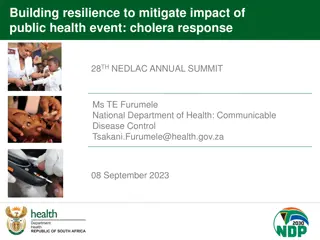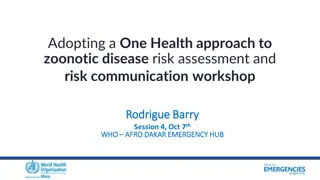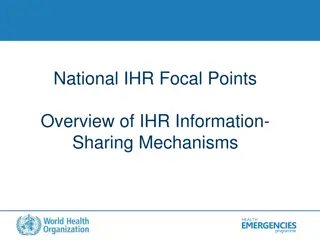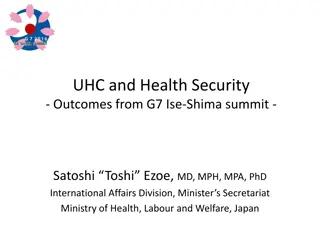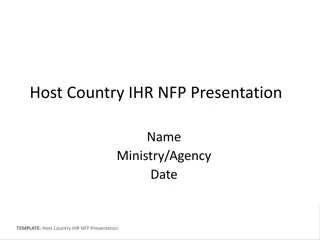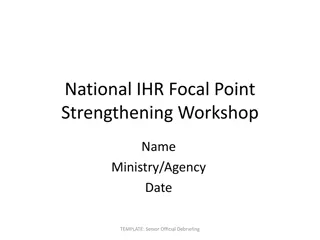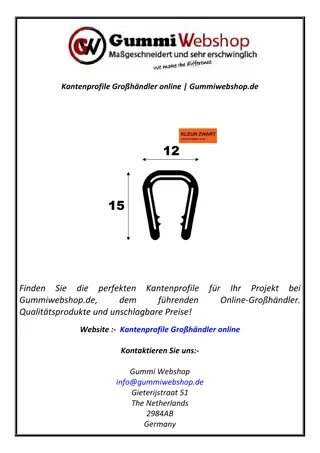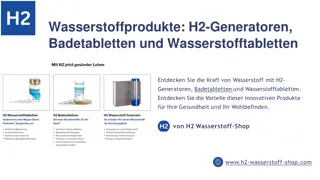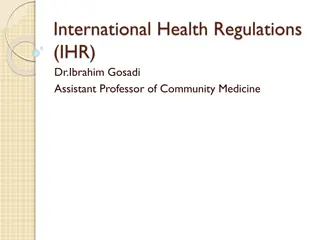IHR
The International Health Regulations (IHR) of 2005 are a crucial framework for addressing international public health emergencies, emphasizing collective responsibility and coordinated response efforts across WHO member countries. By focusing on the prevention, protection, and control of disease spread, the IHR play a pivotal role in safeguarding global health security. Through a historical journey from the 1851 International Sanitary Conference to the adoption of the IHR in 2005, the significance and necessity of these regulations in the face of inevitable disease events and global interconnectedness become evident.
Download Presentation

Please find below an Image/Link to download the presentation.
The content on the website is provided AS IS for your information and personal use only. It may not be sold, licensed, or shared on other websites without obtaining consent from the author.If you encounter any issues during the download, it is possible that the publisher has removed the file from their server.
You are allowed to download the files provided on this website for personal or commercial use, subject to the condition that they are used lawfully. All files are the property of their respective owners.
The content on the website is provided AS IS for your information and personal use only. It may not be sold, licensed, or shared on other websites without obtaining consent from the author.
E N D
Presentation Transcript
IHR Dr. Rashmi Katyal Professor Community Medicine
AIM To prevent, protect, control and provide a public health response to the international spread of disease in ways that are commensurate with and restricted to public health risks, and which avoid unnecessary interference with international traffic.
International Health Regulations IHR 2005 The International Health Regulations are a formal code of conduct for public health emergencies of international concern. They're a matter of responsible citizenship and collective protection. They involve all 193 World Health Organization member countries.
They are an international agreement that gives rise to international obligations. They focus on serious public health threats with potential to spread beyond a country's border to other parts of the world. Such events are defined as public health emergencies of international concern, or PHEIC. The revised International Health Regulations outline the assessment, the management and the information sharing for PHEICs.
IHR serve a common interest. First of all, they address serious and unusual disease events that are inevitable in our world today. They serve a common interest by recognizing that a health threat in one part of the world can threaten health anywhere, or everywhere. And they are a formal code of conduct that helps contain or prevent serious risks to public health, while discouraging unnecessary or excessive traffic or trade restrictions for, quote, "public health," purposes.
History of IHR 1851: first International Sanitary Conference, Paris 1951: first International Sanitary Regulations (ISR) adopted by WHO member states 1969: ISR replaced and renamed the International Health Regulations (IHR) 1995: call for Revision of IHR 2005: IHR (2005) adopted by the World Health Assembly 2006: World Health Assembly vote that IHR (2005) will enter into force in June 2007
Why IHR nesseccery ? Serious and unusual disease events are inevitable Globalisation - problem in one location is everybody s headache An agreed International Public Health code of conduct for a global approach
Whats new? From three diseases to all public health risks From preset measures to tailored response From control of borders to also include containment at source
Major Changes in IHR (2005) Widened scope: to report all major events, that may constitute Public Health Emergency of International Concern. Notification by designated National IHR Focal Points National core capacities for detection and response Real time event management system
Decision instrument of IHR (2005) for Assessment and Notification 4 diseases that shall be notified polio (wild-type polio virus), smallpox, human influenza new subtype, SARS. Disease that shall always lead to utilization of the algorithm: cholera, pneumonic plague, yellow fever, VHF (Ebola, Lassa, Marburg), WNF, others .
What do the IHR call for? Strengthened national capacity for surveillance and control, including in travel and transport Prevention, alert and response to public health emergencies of international concern Rights, obligations and procedures, and progress monitoring Global partnership and international collaboration
Recommendations 1. Health Measures Temporary recommendations (Art 15) Standing recommendations (Art. 16) Examples of health measures for persons (Art. 18) Review travel history and proof of medical examination, lab analysis, vaccination or other prophylaxis; require medical examination, vaccination or other prophylaxis; Public health observation, quarantine, isolation and contact tracing Entry and exit screening Refuse entry of suspect and affected persons Refuse entry of unaffected persons to affected area.
Examples of health measures for baggage, cargo, containers, conveyances, goods and postal parcels (Art. 18) Review manifest, Proof of measures taken on departure or in transit, Routing and implement inspections Implement treatment to remove infection and contamination, vectors and reservoirs. Isolation and quarantine, seizure and destruction Refuse departure or entry.
2. Protections for travellers Overarching rights Sanitation and hygiene of transport Charges Data protection Unjustified measures
3. Health Measures - General application General- Arrival and departure Information about travellers itinerary, destination, non-invasive medical examination Inspection of baggage, cargo, containers, conveyances, goods, postal parcels and human remains Specific - Yellow fever vaccination Vector control - Disinfection of conveyances
4. Affected conveyances and imported cases Affected or diverted conveyances and emergencies Imported cases
4. Health Measures - additional Additional (National and International Law) health measures
Learning from experience: the example of SARS Identification of the problem Linking events in different countries Co-ordinating international response Field Teams Laboratory Epidemiology Clinical Travel advice, entry and exit screening at PoE Timely information & recommendations for control Provision of direct support and assistance
Strengthen national disease surveillance, prevention, control and response system Requires a commitment of States Parties Mobilization of national resources: e.g. staff, infrastructure, budget Development of national action plans, integrated and coordinated with intermediate and local levels like points of entry (ports, airports, ground crossings) Builds on existing national and regional strategies Requires sustained multisectorial approach and international collaboration
IHR Strategic Implementation Plan if IHR was a lighthouse WHO GLOBAL ALERT AND RESPONSE SYSTEM NATIONAL SURVEILLANCE AND RESPONSE International initiatives and networking National Capacity Strengthening THREAT- SPECIFIC CONTROL PROGRAMMES INTERNATIONAL TRAVELS AND TRANSPORTS LEGAL PROCEDURES AND MONITORING GLOBAL PARTNERSHIP
IHR Implementation Plan Global partnership o Foster global partnerships Strengthen national capacity o Strengthen national disease surveillance, prevention, control and response systems o Strengthen public health capacities in travel and transport, including routine measures and emergency preparedness at points of entry Prevent and respond to international public health emergencies o Strengthen who global alert and response system o Strengthen threat-specific international control programmes Legal issues and monitoring o Sustain rights, obligations and procedures o Conduct studies and monitor progress
The IHR foster global partnership Other intergovernmental organizations: UN system (e.g. FAO, IAEA, ICAO, IMO, UNWTO) others: regional (e.g. EU, ASEAN, MERCOSUR), technical (e.g. OIE) Development agencies: governments, banks WHO Collaborating centres Academics & professional associations Industry associations (e.g. IATA, ISF) NGOs and Foundations
Containment at source Rapid response at the source is: The most effective way to secure maximum protection against international spread of diseases key to limiting unnecessary health- based restrictions on trade and travel
Importance of national capacity The best way to prevent international spread of diseases is to detect public health events early and implement effective response actions when the problem is small Early detection of unusual disease events by effective national surveillance (both disease and event based) Systems to ensure response (investigation, control measures) at all levels (local, regional, and national) Routine measures and emergency response at ports, airports and ground crossings.
Core capacity requirements for designated points of entry Designation of points of entry States Parties shall designate Airports and Ports for developing capacities States Parties where justified for PH reasons, may designate ground crossings for developing capacities taking into consideration volume and frequency of international traffic and public health risks of the areas in which international traffic originates.
States Parties sharing common borders should consider: - Bilateral and multilateral agreements - Joint designation of adjacent ground crossing for capacities Identify competent authority for each designated point of entry WHO certification for airports and ports Under request of State Party WHO may arrange to certify it Need to develop procedures and guidelines by WHO
Capacity Strengthening at Points of Entry Point of Entry Core capacity requirements at all times (routine) (b) Equipment & personnel for transport ill travellers (a) Assessment and Medical care, staff & equipment (c) Trained personnel for inspection of conveyances (e) Trained staff and programme for vector control (d) ensure save environment: water, food, waste, wash rooms & other potential risk areas - inspection programmes
Point of Entry Capacity requirements for responding to potential (emergency) Provide assessment & care for affected travellers, animals: arrangements with medical, veterinary facilities for isolation, treatment & other services Provide space, separate from other travellers to interview suspect or affected persons b c Public Health Emergency Contingency plan: coordinator, contact points for relevant PoE, PH & other agencies a Provide for assessment, quarantine of suspect or affected travellers d Provide access to required equipment, personnel with protection gear for transfer of travellers with infection/ contamination To apply recommended measures, disinsect, disinfect, decontaminate, baggage, cargo, containers, conveyances, goods, postal parcels etc g e To apply entry/exit control for departing & arriving passengers f
Points of entry Key public health functions PREVENTION risk management inspection contingency routine control screening plans EARLY WARNING RESPONSE Detecting public health events of international concern Controlling known public health risks at ports, airports, ground crossing Controlling events & responding to emergencies
What does WHO do under the IHR? Designate WHO IHR contact points Support States Parties in assessing their public health risks, through the notification, consultation, and verification processes Inform State Parties of relevant international public health risks Recommendpublic health measures Assist States Parties in their efforts to investigate outbreaks and meet the IHR national core capacities requirements for surveillance and response and points of entry
WHO to help countries managing events New WHO global Event Management System WHO Regional Alert and Response teams Train countries NFPs and WHO contact points for event management Expand Global Outbreak and Alert Response Network GOARN and other specialized and regional support networks Develop new tools and standard operating procedures Carry out IHR exercises
Countries challenges for IHR implementation Mobilize resources and develop national action plans Strengthen national capacities in alert and response Strengthen capacity at ports, airports, and ground crossings Maintaining strong threat-specific readiness for known diseases/risks Rapidly notify WHO of acute public health risks Sustain international and intersectoral collaboration Monitor progress of IHR implementation
Serious Impact on Public Health? There is potentially high morbidity and/or mortality The geographic scope is large or spreading over a large area (e.g. multi-state or regional); is in area of high population density The agent is highly transmissible/pathogenic The event has compromised containment or control efforts Therapeutic/prophylactic agents are unavailable, absent, or ineffective Cases occurring among health care staff Assistance for investigation & response required
Unusual or Unexpected? The disease-causing agent is yet unknown or a new (emergent) pathogen The population affected is highly susceptible The event is unusual for the season, locality or host There is a suspicion that this may have been an intentional act Agent had been eliminated or never reported in U.S.
Significant Risk for International Spread? Epidemiologic link to a similar event outside the U.S. International travel or gathering Contact with traveler or mobile population Potential cross-border movement of pathogen/agent/host Conducive transmission vehicles: air, water, food or environmental
Risk for Trade or Travel Restrictions? There is a history of similar events in the past that have resulted in restrictions The event is associated with an international gathering or a tourist area The event is or has gained significant government or media attention There is a zoonotic disease or the potential for an epizootic event, or exported/imported food/water-related
Public Health Emergency- Multi-sectoral Approach o Public health services oHealth care system o Veterinary services o Agriculture o Education oCommunication oTransport oTrade o Security oArmy, air force, defense oPrime Minister s Office / Presidential Cabinet
Interim technical advice for inspection and issuance of Ship Sanitation Certificates Ship Sanitation Control Exemption Certificate issued when No evidence of a public health risk is found on board and The competent authority is satisfied that the ship is free of infection and contamination, including vectors and reservoirs. This certificate shall normally be issued only if the inspection has been carried out when the ship and holds are empty. Valid for six month period
TRAVEL AND TRANSPORT IHR(2005) Challenges Designation of authorized ports to issue SSC Designation of Point of entry to develop, maintain and strength core capacities Assessment of core capacities for designated points of entry Implementation of WHO Certification for IHR core capacities requirements for ports and airports Integration of points of entry activities to national surveillance system
Development of Intersectorial approach of Public Health concerns at point of entry Development of integrated emergency contingency plans for PoE Development of strategic approach for international communication and cooperation for response to events involving points of entry, travel and transport




